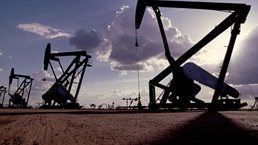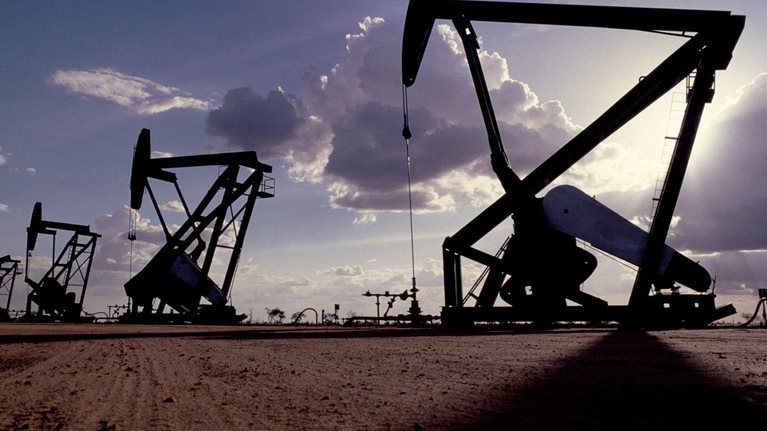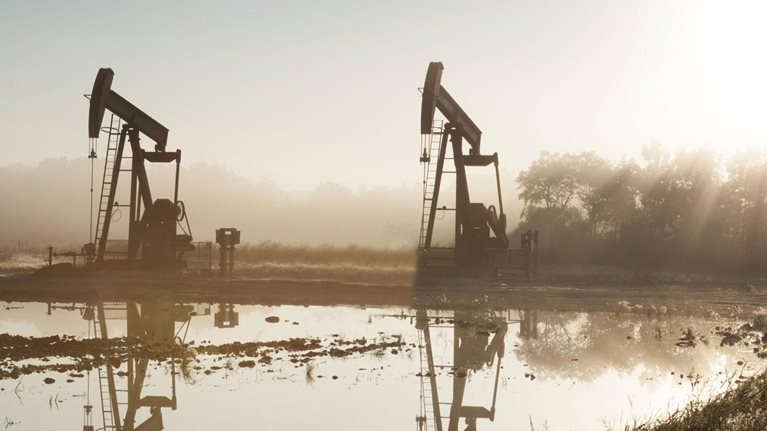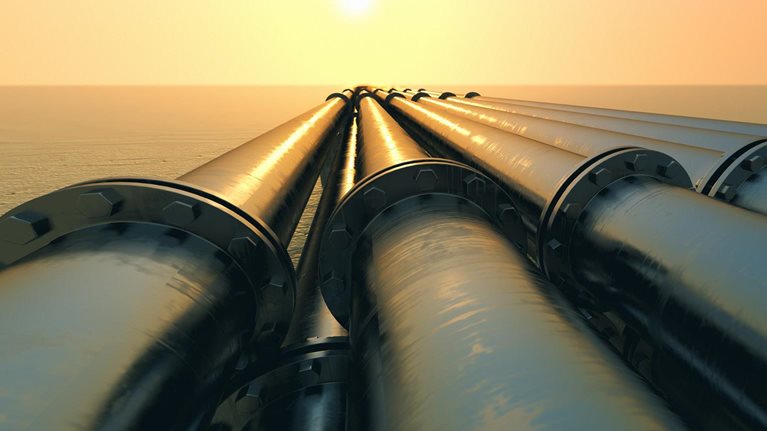Quarterly perspective on oil field services and equipment: March 2017
During the fourth quarter of 2016, OPEC reversed its loose supply policy, and the oil price recovered slightly. Since then it has traded in a tight range in the mid $50s per barrel, with close adherence to the deal so far. This is encouraging upstream activity, especially in the US onshore, which is reflected in a higher onshore rig count and marked rise in upstream capital expenditure through the quarter.
This recovery helped the oil field services and equipment (OFSE) market experience its first quarterly uptick in revenue since Q4 2014, although the rise was marginal and not felt in all OFSE sectors. Revenue was still sharply down on the year, and margins slipped further, although not by much. Equipment margins, in particular, suffered from continued overcapacity, even in the US onshore. For many the full impact of the downturn is still being felt, although the outlook everywhere is brighter than it has been for some time.
Stay current on your favorite topics
The brightest spot is undoubtedly the US onshore, where rig numbers are now over 50 percent above the low seen in May last year. Bankruptcies are also down and capital is flowing back into the industry, but even here OFSE prices have not risen and there is little sign of capacity constraints yet—even in the Permian, where most of the activity has been.
Much of the onshore activity outside the US is gas driven, notably in the Middle East, and has seen little change, while we expect offshore activity will remain subdued for another two quarters. Offshore FIDs remain thin on the ground, with most spot rig demand coming from brownfield projects. But even here there are longer-term signs of growth, with 2017 capex budgets up, and more tenders, especially for subsea work, now appearing—signaling a possible upturn by the end of 2017.
Returns to shareholders moved up with the oil complex through the fourth quarter, but over recent weeks OFSE share prices have eased back, especially assets, which could be related to the fact that, despite the OPEC action and firmer prompt oil prices, the back end of the forward price curve has barely moved. With both prompt and 2021 prices near $55 per barrel, this may be the price at which the market believes sufficient shale is profitable with improving technology to trump OPEC control. It is not far off from our most likely “Price Recovery” market scenario—where the price remains in the $50–$60 per barrel range, before slowly recovering to $65–$70 per barrel by 2020.
Oil market development
November OPEC agreement sees oil market stabilize around $55 per barrel
- The fourth quarter of 2016 ended on a positive note with oil prices recovering to around $55 per barrel in early December, and remaining in a tight range on either side of that ever since. The recovery followed OPEC and non-OPEC countries’ agreement on November 30, 2016, which committed to reducing production by an average of nearly 1.8 million barrels per day in the first six months of 2017, with an option to extend cuts for a further six months—reversing the Saudi-led policy of market share expansion that set prices tumbling more than two years ago.
- Production assessments by independent agencies suggest compliance with the agreement has so far been high from OPEC, especially Saudi Arabia and its allies. Further reductions from non-OPEC could be phased in over the next few months, with Russia in particular committed to deeper cuts as the compliance period plays out. Normally, the risk of “compliance fatigue” grows, allowing production to rise toward the end of a quota period, but so far there is little sign of slippage.
- Set against this are signs of rising production from the United States. Monthly crude oil production increased by 232,000 barrels per day in October and by 105,000 barrels per day in November, according to the EIA, helping crude storage builds—including 13.8 million-barrel build (the second highest ever) one week in February. US production fell more than 1 million barrels from April 2015 through September 2016, but the EIA now expects it to rise to 9.28 million barrels per day by the end of 2017.
- Nevertheless, given the tight OPEC compliance so far, most analysts are pointing to a rebalancing, with some stock draw in the first half of 2017, rising to a more substantial draw down in the third quarter as demand rises ahead of winter—provided production restraint is maintained. But with OECD stocks 400 million barrels above the five-year average, there is plenty of cushion. To make substantial inroads, OPEC restraint would have to continue well beyond this year, along with relatively static output elsewhere.
- One of the most notable elements of the quarter’s price bounce was that it was restricted to the front end of the forward curve, with prices in 2021 barely changed. This has meant a sharp flattening of the curve, with Brent futures for early 2021 trading less than a dollar above prompt prices over recent months, compared to around $10 per barrel for most of 2016. Such a flattening indicates that the market believes it will be relatively easy for future supply to meet demand.
- Overall, prices rose over the quarter, with Brent up from $52.14 per barrel on September 30, 2016, to $57.49 per barrel on December 30, 2016, while at the time of writing, Brent was trading at around $56 per barrel.
OFSE market activity
EP capex—significant quarterly rise sets capex firmly on upward trajectory (Exhibit 1)

- Operator capex in Q4 2016 rose for the first time since Q4 2015, but more significantly the moving average rose for the first time since Q4 2013—indicating a more substantial rebound, although it appears that much of this has yet to filter through to OFSE revenue. The quarter saw capex of $52 billion, compared to $42 billion in Q3 2015 and $62 billion in Q4 2015. This represented a fall/rise on the year of around –15 percent, compared to an annualized fall of 30 percent in Q3 2016.
- Majors and NOCs were responsible for the bulk of the rise, with NOCs also up due to year-end budgetary spending—building on a rise of about 7 percent in the third quarter. Among companies raising capex in the fourth quarter was Permian-focused Oxy Petroleum, which managed a reserve replacement ratio of 190 percent in 2016, alongside finding and development costs of $9.65 per barrel of oil equivalent.
- Capital spending is expected to rise further in 2017. A Barclays survey of upstream companies predicts 7 percent growth in investment in 2017, after falls of around 25 percent in 2015 and 2016. But although the total is up, spending on offshore projects is expected to drop by up to 25 percent this year, according to the survey, with most of the upside down to the US onshore. European E&P companies are still largely in “retrenchment mode,” with spending predicted to fall by 7 percent this year—leaving European services companies focusing on incremental gains to maintain margins. Some, however, have reported an increase in tenders in the last few months.
- Many companies have announced expansion plans for 2017, including Apache Corp, which anticipates a more than 60 percent jump in capital spending, although despite this, production is expected to fall 28,000 barrels per day. The company plans to raise its capital budget to $3.1 billion for 2017, from $1.9 billion last year, with nearly two-thirds earmarked for the Permian Basin. Exxon Mobil, Chevron, and Hess, among others, have also boosted their capital budgets for the year.
- Political developments and their likely policy and regulatory implications also had a major impact over the quarter. Above all, the unexpected outcome of the US elections could yield some far-reaching consequences for the US onshore market in particular. Already work has restarted on the Dakota Access oil pipeline, and regulations of all types are being rolled back, which should help keep costs down and encourage development.
Rig count—US onshore market growth continues; little change elsewhere (Exhibit 2)

- The North American onshore rig count remained firmly in positive territory, according to Baker Hughes, rising for the eighth straight month in January to reach 960—well over double the 423 low seen in May, as firmer oil prices encouraged operators to start drilling again. However, the same rise was not seen outside North America. Apart from in Europe—where onshore rig numbers rose slightly, from 52 in July to 67 in January—and a slight rise in APAC, numbers have continued to fall and are down overall. Halliburton chairman David Lesar summed it up: “Our world is still a tale of two cycles. The North America market appears to have rounded the corner, but the international downward cycle is still playing out.” He said outside the United States low prices had “stressed budgets and impacted economics across deepwater and mature field markets.” Other commentators have pointed to the relative ease of access to capital and the shorter project lead times as reasons for the relative pace of the US rebound, while the slight recovery in Europe and APAC may also be down to capital availability in more responsive market-driven economies than those elsewhere in the world. Much of the onshore drilling activity in the Middle East is gas focused and relatively sheltered from oil price fluctuations. Overall, the strong US performance pushed the global onshore rig total up in the quarter, with September’s total of 1,344 moving to 1,687 in January—up from a low of 1,150 in May.
- Most of the recent US activity up to the fourth quarter has been in the Permian, with a rise of 85 in the rig count there between May and November. But since then production and rig counts have risen in other areas too—of the 123 total US oil-directed rigs count rise since November 2016, 48 have been in the Permian, 23 in Eagle Ford; 3 in the Williston, and 12 in Cana Woodford. The outlook for this year is buoyant, with many US oil producers talking about ramping up drilling.
- There has not been the same pickup in the offshore rig market, with global numbers falling from 240 in September to 231 in January, compounding a similar fall in the previous quarter. However, there were, once again, signs that the US may be first to respond to improving conditions. North American numbers rose to 25 in December from 19 in September, with APAC also showing a modest rise. The longer contract lead times for offshore work means there may be more of a delayed response to improving market conditions, as contracts continue to roll off before new work has begun.

Oil-field services sector gears up for a recovery … but is not there yet
OFSE market performance
Quarterly revenue growth across the board signals end to downturn proper
- Overall OFSE revenue rose just 0.3 percentage points (pp) compared to the previous quarter—the first quarterly growth since Q3 2014 (Exhibit 3). This builds on increasingly small decreases over recent quarters, including just 4.1 pp last quarter, which has pushed the 4Qs moving average above earlier levels. However, it was still 15.7 pp below the same period last year, although this was a sharp improvement on –22.7 pp in Q3 2016 year on year. Returns to shareholders also rose over the quarter, with a sharp bounce after the OPEC deal, although since the New Year they have remained flat or lower, with assets faring particularly badly.

- Looking at the subsectors, services enjoyed the biggest revenue rise, followed by assets and equipment, with EPC revenue still down on the quarter. Margins remained under pressure, slipping slightly across the board, especially equipment, with no recovery in prices even in the US onshore due to continued overcapacity (Exhibit 4).

- Services: Service revenues fell 17.7 pp on the year, compared to 27.6 pp in Q3, indicating a slowing of market contraction. On a quarterly basis there was a rise of 3.0 pp for the fourth quarter, compared to a quarterly fall of 1.4 pp in the third quarter. It was the first rise in eight quarters, and suggests the market contraction has now ceased. Margins slipped back 0.8 pp on the quarter, after a 1.7 pp dip in the third quarter, and are down 2.6 pp compared to Q4 2015. The recovery is being driven by rising capex, along with a bounce back in profitability in the wake of merger activity. So far, however, there is no sign of expansion, with spare services capacity easily able to absorb the slow recovery in demand, which is heavily focused on the US onshore. The mood at the fourth-quarter earnings reviews was generally one of relief and positivity, in contrast to those earlier in the year. Schlumberger chief executive Paal Kibsgaard typified this sentiment, saying his company was again focusing on the pursuit of growth following nine consecutive quarters of “relentless” workforce reductions and cost-cutting.
- Equipment: Overcapacity in the equipment sector means that even though US onshore activity levels are up there has been no upward pressure on prices. Q4 2016 revenue rose by just 1.4 pp on the quarter and fell 17.5 pp on the year—a notable improvement on the 25.7 pp yearly fall in the third quarter. But margins were down 2.1 pp on the quarter and 8.4 pp compared to Q4 2015, which was the worst performing quarter—although this could partly be driven by higher costs as onshore US equipment companies ramp up to cater for more drilling in 2017. Margins have fallen sharply over recent quarters, and are now at 1 percent, their lowest level since our data set began in 2008. Prices will have to rise substantially to achieve the average 2008–2015 margin of 18.8 percent. But, despite the bleak picture, returns to shareholders from equipment companies rose back to zero (since January 1, 2015)—far better than assets—indicating there may be better prospects on the horizon (Exhibit 5). Particularly poor results from November dragged down the overall equipment averages.

- Assets: Q4 2016 revenue fell 27.2 pp on the year, compared to 35.5 pp in Q3 2016—but on a quarterly basis it rose 2.2 pp, the first gain since Q4 2014, and sharply up on the 16.6 pp decline last quarter. The recovery was helped by particularly strong results from BW Offshore, which saw revenue rise to $298 million in the fourth quarter from $160 million in the third quarter. The stock markets are certainly not pricing in a positive outlook (Exhibit 5). The asset sector has fared by far the worst, losing 33 pp since January 1, 2015, despite a significant recovery in the fourth quarter. Unlike other categories, assets reversed part of that recovery since the beginning of this year. Nevertheless, it is an improvement on the 50 percent loss since January 1, 2015, seen up to the end of Q3 2016. Asset margins were little changed in Q4, losing just 0.3 pp on the quarter after a quarterly fall of 1.0 pp in Q3 2016. Compared with a year earlier, margins are down just 1.9 percent, at around 36 percent—not far off where they have been since 2010, despite the recent abysmal business conditions.
- EPC: EPC companies saw quarterly revenue fall by 3.1 pp, bucking the upward trend elsewhere, and building on a slight fall of 0.1 pp in the third quarter. EPC revenue now stands 4.7 pp down on the year, a marginal improvement on the annual fall of 6 pp in Q2 2016. Margins contracted by 0.4 pp compared to the third quarter, and were down 1.6 pp compared to Q4 2015. Order backlog ratios have been falling this year, and are now roughly where they were before the downturn in 2014 at around 7x (Exhibit 6).



